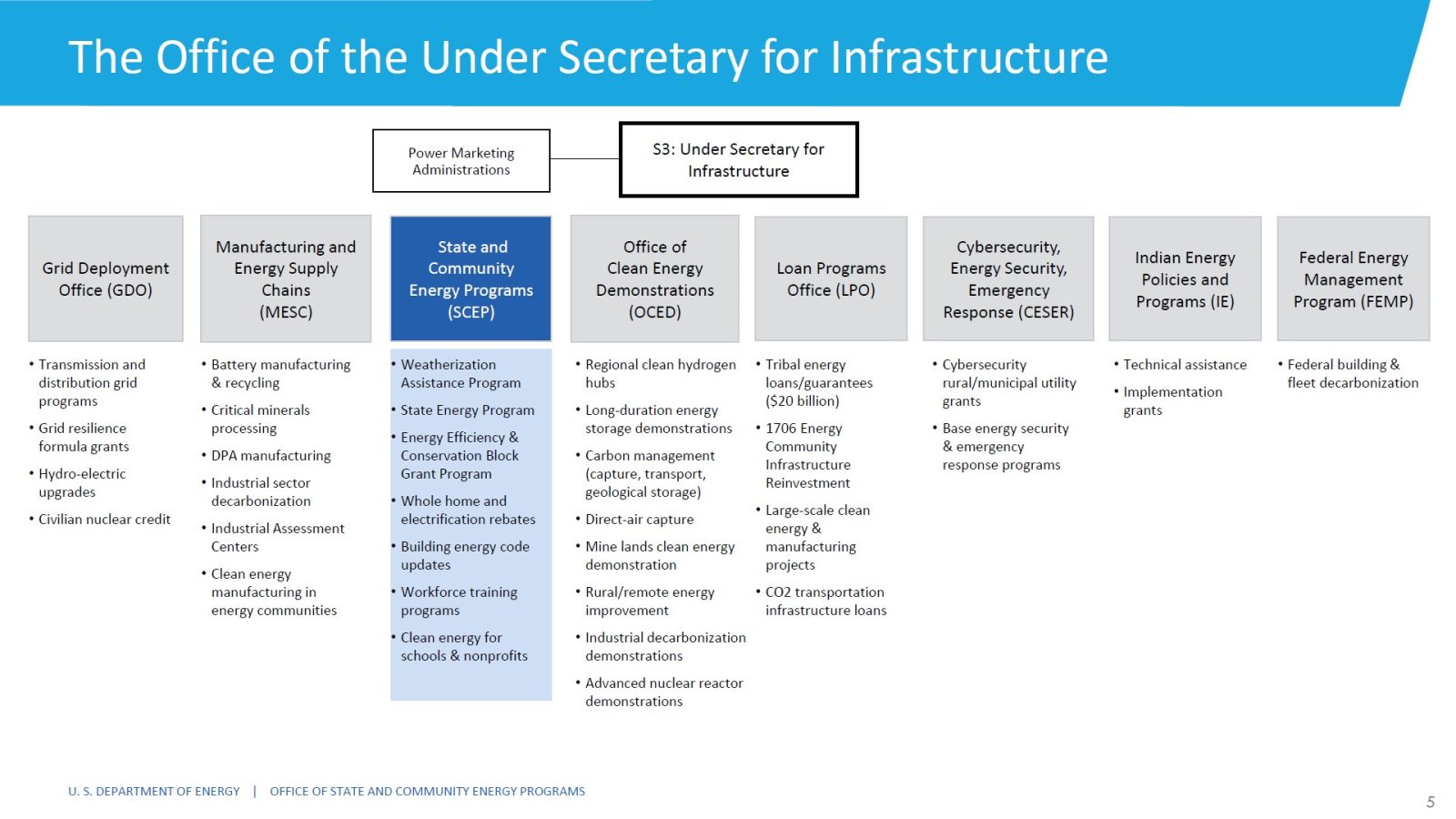Inflation Reduction Act | Just Transition
May 6, 2024
November 6, 2023 | Awa Darboe
The Department of Energy’s Office of State and Community Energy Programs (SCEP) was recently established in 2022 through the Bipartisan Infrastructure Law (BIL) to work with state and local organizations to significantly accelerate the deployment of clean energy technologies, catalyze local economic development, and create jobs. The Office also supports the Justice40 initiative, which is intended to reduce energy costs and avoid pollution through place-based strategies involving a wide range of government, community, business, and other stakeholders.
SCEP sits under the Office of the Under Secretary of Infrastructure, which was created by BIL and established in February 2022. SCEP received approximately $10B from the Inflation Reduction Act and $6B from BIL for programs.

SCEP’s overarching goal is to be the catalyst for transforming the nation’s energy landscape. It envisions a future where clean energy technologies are accessible to all, where communities thrive economically, where energy costs are manageable, and where pollution is significantly reduced. In essence, SCEP aims to:
SCEP extends the capacity and capabilities of states, tribes, local governments, schools, and community-serving organizations to instill high-impact, self-sustaining clean energy initiatives that focus on low-income and disadvantaged communities. This is accomplished through the management and oversight of $16B in formula grants, competitive grant awards, consumer rebate grants, and technical assistance.
SCEP boasts a diverse portfolio of programs, each with a specific focus and impact:
SCEP has been able to evolve and expand its programs as a result of the passage of the Inflation Reduction Act (IRA), which invests over $370B into clean energy and climate change mitigation efforts. As a result, SCEP has introduced new programs and initiatives to capitalize on this opportunity:
CEP programs include:
The State and Local Solution Center serves as a valuable resource hub for states, local governments, and K-12 school districts. It offers a wide array of technical assistance resources, funding opportunities, and events to support organizations in achieving their energy efficiency and renewable energy goals.
SCEP’s Resource Hub is dedicated to organizing technical assistance tools and resources around the Energy Efficiency Leadership Framework, which identifies barriers to significant energy and cost savings. This framework helps stakeholders navigate the landscape of clean energy initiatives and maximize their impact.
_____
Want to know more about BIL? Explore additional entries to the Breaking Down the Bipartisan Infrastructure Law series to discover programs funded through this $1.2T investment. CEBN’s cleantech funding database includes even more opportunities.